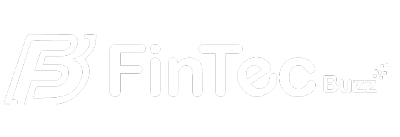When employees resist new technology, they often create workarounds and data silos, undermining the very benefits your investment was meant to deliver. A new report from Yooz shows that 1 in 7 employees have refused to use workplace tech. To get past this, leaders must first understand why employees resist new technology.
Why Employees Resist New Tech
Every case of resistance is its own story, but data shows that the following three factors are among the most important to understand.
Poorly Planned Rollouts
First, many companies have a poor implementation process for new technology. This is like making a bad first impression, which can be difficult to recover from.
The Yooz study found that 51% of employees believe tech rollouts create internal chaos. This frustrating experience can make workers resent new platforms before learning how valuable they can be.
Insufficient Training
Next, most employees feel unprepared to leverage new workplace technologies, and it’s easy to see why. The survey revealed that 52% receive only basic new platform training, while 20% receive none. This builds frustration and resentment instead of excitement.
Lack of Input
Finally, employees resist new technologies that they don’t have a say in choosing. Data shows 36% believe having more input in the decision-making process would improve adoption. So, choosing a new tool without involving your workers can reduce the likelihood of a successful rollout, even if the product is the perfect fit for your business.
Generational Divides Make Adoption Even More Complicated
Generational divides in digital skills and attitudes also contribute to employee resistance. Yooz’s study found that Gen Z workers are significantly more likely to say no to bad tech than Boomers (25% vs. 11%). Additionally, 33% of Gen Z workers say ease of use is the most critical factor for a successful tech rollout, versus just 17% of Boomers.
There are also key differences in decision-making expectations between generations. Data shows 34% of Boomers trust leadership to decide on tools, while 35% of Gen Z employees want input.
These differences put leaders in a difficult position. Rollout strategies that are ideal for younger workers could frustrate senior employees. At the same time, older workers may have lower digital skill levels. So, following younger employees’ input may not always be the right move for the whole team.
Turning Resistance Into Results
Employees resist new technology for many reasons, but there are concrete steps you can take to fix the problem. Following these strategies will help you address these issues before they become roadblocks in your software rollout.
Include Employees in Tech Selection
First, consider including employees in the decision-making process when shopping for new technology. We recommend creating multigenerational focus groups to account for age-based differences. This will help employees feel like they have a stake in whatever tool you end up choosing, even if you don’t select their top choice.
Encourage Tech Mentorship Across Age Groups
Next, encourage cross-generational tech mentorship. This can help workers with lower digital skill levels learn new technologies faster.
It’s also a strategy that could reduce age-based differences in technology skills and preferences over time. When older and younger workers teach one another, each group moves closer to a unified center. This could make future tech rollouts easier.
You can assign mentors directly, ask employees to sign up for the program, or encourage informal mentorship. The best strategy for your company will depend on its people, which you know best.
Leadership Must Champion New Tools Visibly
Another important factor is buy-in from leadership. Employees should see their managers and supervisors using the new technology and explicitly encouraging others to do the same.
This kind of top-down commitment forces employees to take the new technology seriously. When leaders don’t champion new tools, it’s easier for employees to view them as non-essential.
Create Feedback Loops for Ongoing Improvement
Finally, it’s worth creating feedback loops to refine your new tech rollout over time. This can be as simple as setting up a channel for employee questions, concerns, and general feedback. Doing so will give employees a way to voice their frustrations and leaders the opportunity to address them.
However, it’s critical that you respond to employee feedback after opening the channel. If workers who complain feel you don’t take them seriously, it could solidify their resistance to the new technology.
Tech Success Requires Human Strategy
Fintech can be a powerful tool for improving your company’s efficiency, reporting, and profitability, but you need internal adoption to get there. That can be challenging to reach due to the many factors that lead employees to resist new tech upgrades.
You can overcome this resistance with a better rollout strategy and a more humanistic approach. Listen to feedback, promote cross-generational collaboration, include workers in your decision-making process, and improve over time through feedback loops. It also helps to get support from your vendors — they should provide implementation solutions tailored to the needs of your workforce.
With their help, you can shift employee mindsets around new technology and ensure both your team and the business see real value.
Stay Ahead of the Financial Curve with Our Latest Fintech News Updates!

John Gronen , CFO at Yooz
John Gronen is the Chief Financial Officer of Yooz, a global leader in AI-powered accounts payable automation. He leads the company’s financial strategy and global finance operations, drawing on over 25 years of experience in finance, operations, and M&A. Known for his ability to scale organizations and drive growth, John has helped strengthen Yooz’s position as a trusted automation partner worldwide.
John Gronen
John Gronen is the Chief Financial Officer of Yooz, a global leader in AI-powered accounts payable automation. He leads the company’s financial strategy and global finance operations, drawing on over 25 years of experience in finance, operations, and M&A. Known for his ability to scale organizations and drive growth, John has helped strengthen Yooz’s position as a trusted automation partner worldwide.



